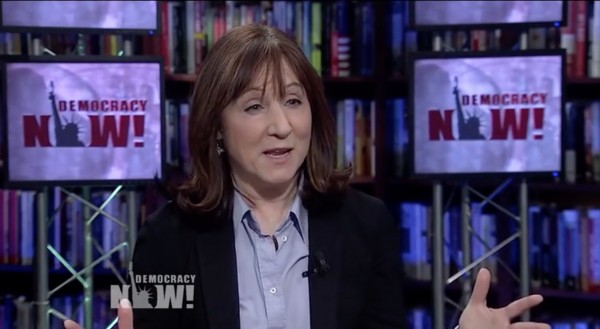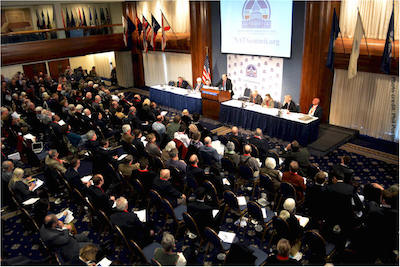Christopher Steele As Seen By the New Yorker
Mar 28 2018 / 1:49 pm
Liberal fantasies beatify the messenger
The latest salvo in the Russiagate saga is a 15,000 word New Yorker article entitled “Christopher Steele the man behind the Trump dossier: how the ex-spy tried to warn the world about Trump’s ties to Russia” by veteran journalist Jane Mayer. The premise of the piece is clear from the tediously long title, namely that the Steele dossier, which implicated Donald Trump and his associates in a number of high crimes and misdemeanors, is basically accurate in exposing an existential threat posed to our nation by Russia. How does it come to that conclusion? By citing sources that it does not identify whose credibility is alleged to be unimpeachable as well as by including testimony from Steele friends and supporters.
In other words, the Mayer piece is an elaboration of the same “trust me” narrative that has driven the hounding of Russia and Trump from day one. Inevitably, the Trump haters both from the left and the right have jumped on the Mayer piece as confirmation of their own presumptions regarding what has allegedly occurred, when, in reality, Trump might just be more right than wrong when he claims that he has been the victim of a conspiracy by the Establishment to discredit and remove him.
Mayer is a progressive and a long-time critic of Donald Trump. She has written a book denouncing “the Koch brothers’ deep influence on American politics” and co-authored another book with Jill Abramson, formerly Executive Editor of the New York Times. Abramson reportedly carries a small plastic replica of Barack Obama in her purse which she can take out “to take comfort” whenever she is confronted by Donald Trump’s America. Mayer’s New Yorker bio-blurb describes her as a journalist who covers national security, together with politics and culture.
The problem with the type of neo-journalism as practiced by Mayer is that it first comes to a conclusion and then selects the necessary “facts” to support that narrative. When the government does that sort of thing to support, one might suggest, a war against Iraq or even hypothetically speaking Iran, it is called cherry picking. After the facts have been cherry picked they are “stovepiped” up to the policy maker, avoiding along the way any analysts who might demur regarding the product’s veracity. In journalistic terms, the equivalent would perhaps be sending the garbage up directly to a friendly editor, avoiding any fact check.
Mayer tries to take the high road by asserting that the Republicans are “trying to take down the intelligence community.” It is an odd assertion coming from her as she has written a book called “The Dark Side: The Inside Story of How the War on Terror Turned into a War on American Ideals,” a development which was pretty much implemented by the intelligence community working hand-in-hand with Congress and the White House. But she is not the first liberal who has now become a friend of CIA, the FBI and the NSA as a response to the greater threat allegedly posed by Donald Trump.
A Steele friend describes the man as a virtual Second Coming of Jesus, for whom “fairness, integrity and truth…trump any ideology.” Former head of MI-6 and Steele boss Sir John Dearlove, who once reported how the intelligence on Iraq had been “sexed-up” and “fixed around the policy” to make the false case for war, describes Steele as “superb.” Other commentary from former American CIA officers is similar in nature. Former CIA Deputy Director John McLaughlin, who himself was involved in lying to support America’s journey into Iraq, similarly sees Steele as honest and credible in his claims, while a former CIA Station Chief in Moscow is called upon to cast aspersions on the “Russian character” that impels them to engage in lies and deception.
My review of the Mayer rebuttal of criticism of Steele revealed a number of instances where she comes to certain conclusions without presenting any real supporting evidence or accepts “proof” that is essentially hearsay because it supports her overall narrative. She asserts that Russia and WikiLeaks were working together on the release of the Democratic National Committee/Hillary Clinton emails without providing any substantiation whatsoever. She surely came to that judgement based on something she was told, but by whom and when?
Another major blooper in the Mayer story relates to how one unnamed “senior Russian official” reported that the Kremlin had blocked the appointment of Mitt Romney, a noted critic of Russia, as secretary of state. How exactly that was implemented is not clear from the Steele reporting and there has been no other independent confirmation of the allegation, but Mayer finds it credible, asserting that “subsequent events could be said to support it.” What events? one might ask, though the national media did not hesitate and instead reported Mayer’s assertion as if it were itself a credible source in a forty-eight hour news cycle frenzy relating to Romney and Trump.
Steele’s work history also raises some questions. He served in Moscow as a first tour officer for MI-6 under diplomatic cover from 1990 to 1993. Russia was in tumult and Mayer describes how “Boris Yeltsin gained ultimate power, and a moment of democratic promise faded as the KGB -now called the FSB-reasserted its influence, oligarchs snapped up state assets, and nationalist political forces began to emerge.” Not to go into too much detail, but Mayer’s description of Russia at that time is dead wrong. Yeltsin was a drunkard and a tool of American and European intervention and manipulation. He was no agent of “democratic promise” and only grew more corrupt as his time in office continued into the completely manipulated election of 1996, when the IMF and U.S. conspired to get him reelected so the looting, a.k.a. “democratization,” could go on. Mayer goes on to depict in negative terms a “shadowy” former “KGB operative” Vladimir Putin who emerged from the chaos.
Mayer also cites a Steele report of April 2016, a “secret investigation [that] involved a survey of Russian interference in the politics of four members of the European Union,” but she neither produces the report itself or the sources used to put it together. The report allegedly concluded that the “Kremlin’s long-term aim …was to boost extremist groups and politicians at the expense of Europe’s liberal democracies. The more immediate goal was to destroy the E.U…” The precis provided by Mayer is a bit of fantasy, it would seem, and is perhaps a reflection of an unhealthy obsession on the part of Steele, if he actually came to that conclusion. As it stands it is hearsay, possibly provided by Steele himself or a friend to Mayer to defend his reputation.
Mayer also reports and calls potentially treasonous Steele’s claims that “Kremlin and Trump were politically colluding in the 2016 campaign…’to sow discord and disunity both with the U.S.’ and within the transatlantic alliance.” And also, “[Trump] and his top associates had repeatedly accepted intelligence from the Kremlin on Hillary Clinton and other political rivals.” As Robert Mueller apparently has not developed any information to support such wild claims, it would be interesting to know why Jane Mayer considers them to be credible.
Sweeping judgements by Mayer also include “[Steele’s] allegation that the Kremlin favored Trump in 2016 and was offering his campaign dirt on Hillary has been borne out. So has his claim that the Kremlin and WikiLeaks were working together…” As noted above, the WikiLeaks/Kremlin allegations have not been demonstrated, nor have the claims about Kremlin provision of information to discredit Hillary, who was doing a find job at the time discrediting herself.
The account of Donald Trump performing “perverted sexual acts” in a Moscow hotel is likewise a good example of what is wrong with the article. Four sources are cited as providing details of what took place, but it is conceded that none of them was actually a witness to it. It would be necessary to learn who the sources were beyond vague descriptions, what their actual access to the information was and what their motives were for coming forward might be. One was allegedly a “top-level Russian intelligence officer,” but the others were hotel employees and a Trump associate who had arranged for the travel.
Finally, from an ex-intelligence officer point of view I have some questions about Steele’s sources in Russia. Who are they? If they were MI-6 sources he would not be able to touch them once he left the service and would face severe sanctions under the Official Secrets Act should he even try to do so. There are in addition claims in the Mayer story that Steele did not pay his sources because it would encourage them to fabricate, an argument that could also be made about Steele who was being paid to produce dirt on Trump. So what was the quid pro quo? Intelligence agents work for money, particularly when dealing with a private security firm, and Steele’s claim, if he truly made it, that he has sources that gave him closely held, highly sensitive information in exchange for an occasional lunch in Mayfair rings hollow.
Jane Mayer’s account of the Steele dossier seems to accept quite a lot on faith. It would be interesting to know the extent to which Steele himself or his proxies were the source of much of what she has written. Until we know more about the actual Russian sources and also about Mayer’s own contacts interviewed for the article, her “man behind the Trump dossier” will continue to be something of a mystery and the entire Russiagate saga assumption that Moscow interfered in the 2016 U.S. election must be regarded as still to be demonstrated.

